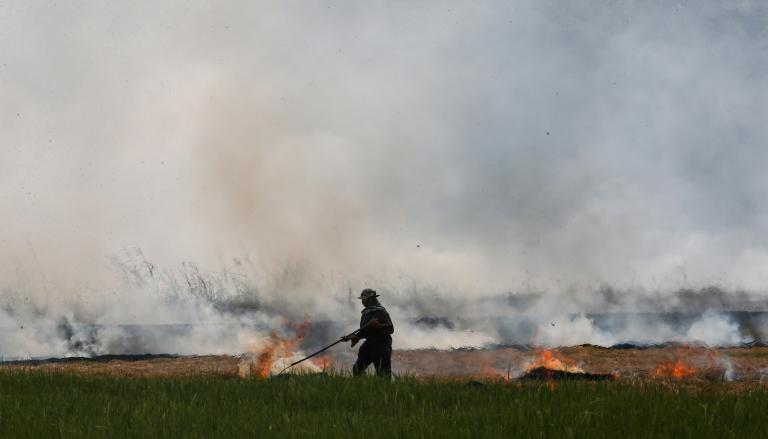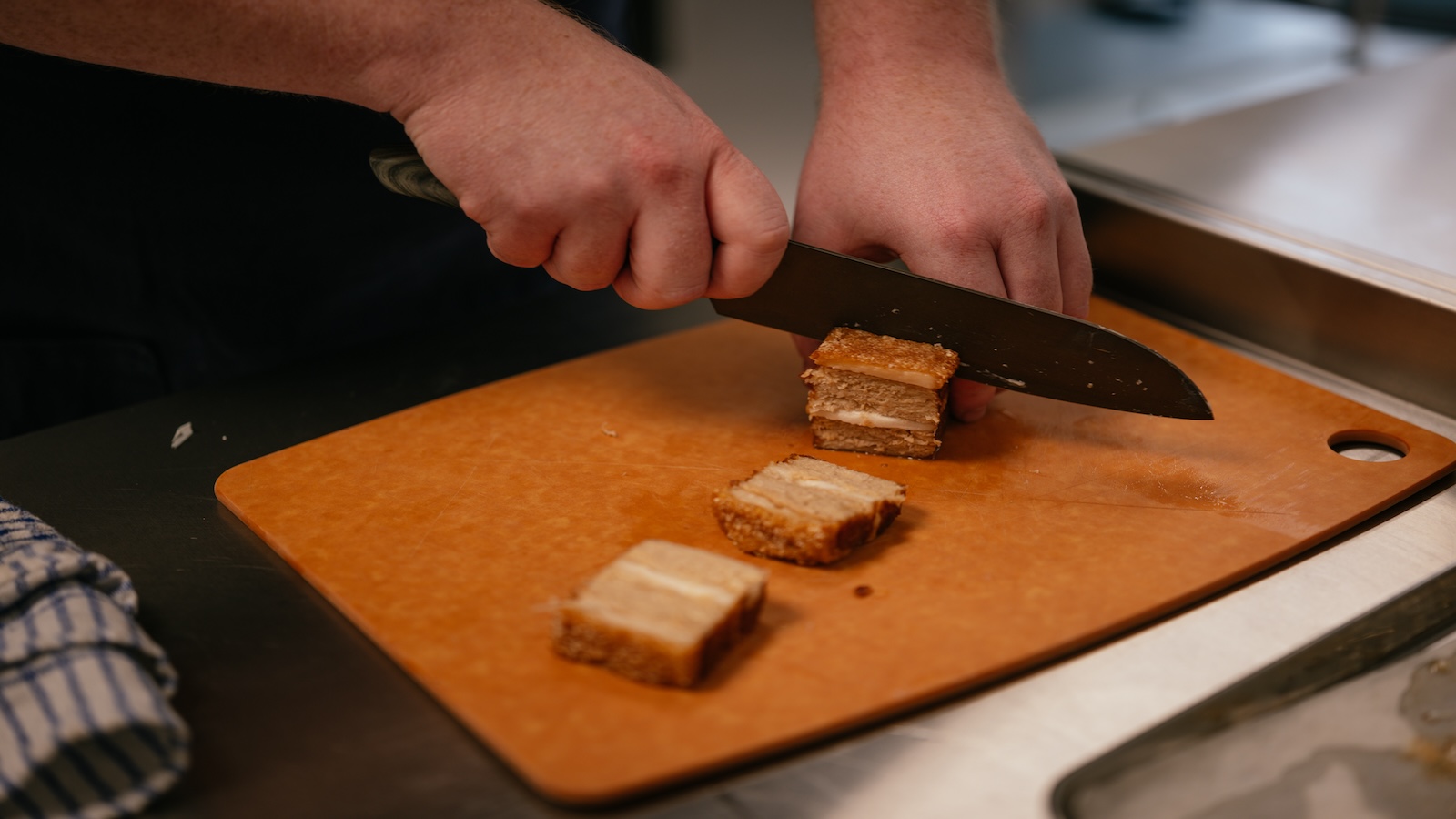Amid the widespread destruction, brutal heat, heavy rains, and ongoing outages along the Gulf coast, relief organizations are scrambling to ensure people stay fed in the wake of Hurricane Beryl. Ever since the storm made landfall in southeastern Texas, causing millions to lose power, local churches and supermarkets have given away meals and soccer stadiums have become grocery distribution points.
The hurricane, which caused catastrophic damage as it roared across the Caribbean and the Yucatan Peninsula, pummeled southeastern Texas on July 8 before spawning tornadoes, rain, and flooding as far north as Vermont. All told, the earliest Category 5 hurricane ever recorded has claimed the lives of at least 20 people, including 10 in southeast Houston, and caused at least $3.3 billion in damage. That figure is sure to rise in the weeks and months ahead.
So, too, is the hunger crisis.
With Beryl long since past, the biggest threat facing Texans — particularly the almost 300,000 of them still without power on Monday — is brutal heat and unrelenting humidity. The heat index for some areas approached 106 degrees Fahrenheit Friday and stayed above 90 all weekend. Widespread outages did more than eliminate air conditioning when it was desperately needed. It also caused food to spoil in homes, supermarkets, and warehouses.
To help combat this, the Houston chapter of the national nonprofit Feeding America has deployed a fleet of 60 or so refrigerated trucks each day to distribute food. It is working with more than 300 organizations to provide upward of 700,000 pounds of food daily. Such efforts will surely continue as the region slowly recovers.
“There are immediate needs that happen because of the storm. ‘I don’t have power. What am I going to cook?’” said Brian Greene, president of Houston Food Bank. “Then it really moves into the households that don’t have that financial cushion that took the hit. For those households, we may be working with them for many weeks.”
The outages caused about a quarter of the organizations the food bank typically works with to shut down until electricity is restored. But international nonprofits including World Central Kitchen have mobilized; the federal government has approved additional SNAP, or Supplemental Nutrition Assistance Program, benefits; and the Texas Department of Emergency Management has supplied the Houston Food Bank with readymade meals. Roughly 500 American Red Cross volunteers are operating 18 shelters across Harris and surrounding counties. They have distributed more than 56,000 meals and snacks to thousands of people in the last week.
But these resources don’t always reach everyone. The elderly and homebound, immigrants, those with disabilities, and families with children often face challenges accessing them, said Kassandra Martinchek of the Urban Institute. Language barriers also create an impediment to getting help. That compounds what is a chronic problem, as nearly half of the people who struggle to afford food in Texas also don’t qualify for federal assistance like SNAP. (Texas has the most food-insecure population in the country, according to a 2024 Feeding America report.)
While emergency food relief doesn’t reach everyone, it remains essential. “There still might be barriers for households, but this immediate response by charitable providers and by federal nutrition programs is an important part of the broader patchwork of programs that help families post-disaster,” said Martinchek, who researches food access. Food insecurity “is really this household economic condition wherein families aren’t able to get the food they need to live a healthy and active life.”
Disasters augment that crisis. Poverty rates tend to climb in impacted areas because many people, particularly those from low-income households, are less able to prepare for a looming storm or recover from the emotional and physical damage they wreak. This deepens existing racial and socioeconomic divides, and exacerbates the food insecurity most commonly experienced by communities of color, those with disabilities, and households below the federal poverty line, because research has shown that food tends to be among the first expenditures financially unstable households cut during economic turbulence. (Not only do they buy less food, but the quality decreases as well.) The immense cost of recovering from a storm like Beryl can deepen the plight of families already battling hunger and push those on the verge of it over the “hunger cliff.”
A 2023 analysis examined 47 counties across the country in which Black and Latino families face conflating rates of food insecurity and climate risk and pegged the average per capita cost of climate disaster over the past decade at $1,822. That’s about double the average cost for all other counties that experienced such events. This suggests that those already struggling to meet their food needs bear the economic brunt of climate hazards. Meanwhile, around 37 percent of American households lack the savings to cover a $400 emergency expense.
All of this makes relief critical. In a federally declared disaster like Beryl, emergency SNAP benefits and charitable efforts are intended to deliver food in the weeks, and sometimes months, after the calamity. D-SNAP, or disaster SNAP, which the government enacted July 12 for those impacted by Beryl, offers temporary additional assistance.
Although such efforts provide a buffer against the increased risk of food insecurity a disaster creates, they do little to address the underlying factors driving hunger. Apart from the mass mobilization of food in the wake of a crisis, the U.S. government offers little more than programs with fragmented eligibility systems to help households grappling with reduced food purchasing power, said Kristen Wyman of the nonprofit WhyHunger.
“We know that hunger is solvable,” said Wyman. “But we still live in a system that is designed to have an emergency food response as the ongoing Band-Aid around hunger and poverty.”
The nation’s disaster response plans ought to look beyond immediate needs and include efforts to foster equitable long-term food access, said Sommer Sibilly-Brown. She founded the nonprofit Virgin Islands Good Food Coalition, which advocates for farmers and food justice. Sibilly-Brown would like to see emergency relief funding allocated to rebuilding community food infrastructure and more comprehensive aid programs that include expanded funding mechanisms for lower-income households, growers, and food-industry workers.
“We attend to emergency shelters and household needs with food,” said Brown. “It’s a 90-day to six-month window, depending on the level of disaster. But food insecurity continues based on what systems have been impacted. Have people been able to go back to work? Have people moved and been displaced? Do people still have power?”
In the coming weeks and months, as the scope of Beryl’s impact has been assessed and the cleanup continues, the urgency of the recovery will begin to dwindle — and so, too, will the hunger relief efforts. That will leave the most vulnerable communities to grapple with the economic downturns a disaster inevitably creates, leaving many of them worse off than they were before the storm. And, no doubt, no less hungry.
This story has been updated.




